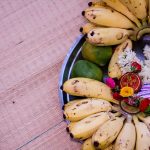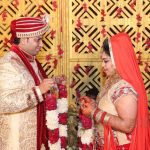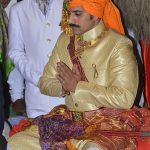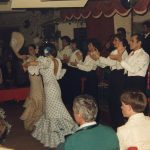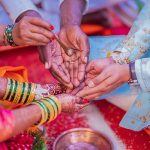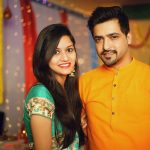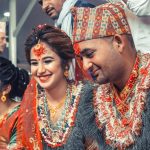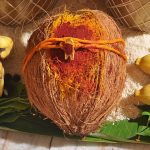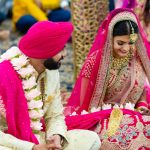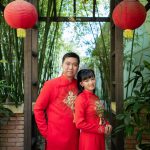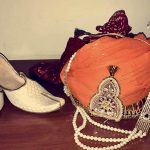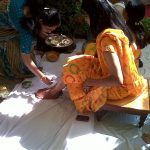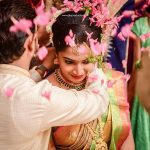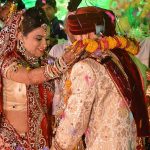If you wish to experience the historical traditions of the Ezhava community of Kerala, there is no place better than at a wedding! It is the perfect occasion to witness the diversity of culture and traditions in India. Even though the world is modernizing at a rapid pace, the Ezhava community maintains its own unique and warm customs as a part of its identity!
Background
The Ezhava community is part of the larger Hindu culture in the sub-continent. However, they have their own unique rituals and culture going back hundreds of years to the Dravidian dynasties of South India.
Most wedding ceremonies in Kerala do not last for an extended period of time. Ezhava weddings are even shorter when you compare them to other Hindu community weddings. Usually, they only take one day to complete. Generally, the ceremony is held as a subdued affair. There isn’t a lot of noise or showing off in the community during this time.
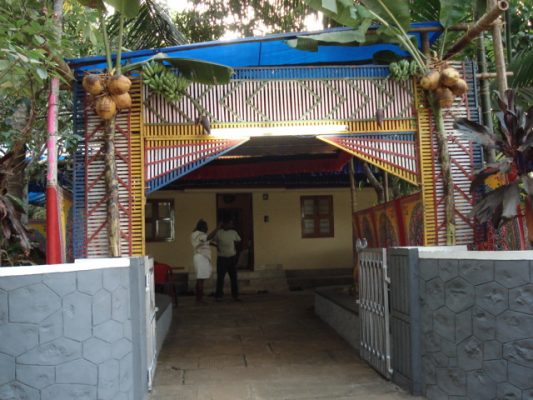
Pre-Wedding Rituals in Ezhava Wedding
Nischayam: The ceremony is the official announcement of the engagement. The elders from both sides of the couple’s family sit together and decide on a date for the engagement and the wedding.
Both families exchange a lot of gifts and sweets as a token of their new relationship. In the Ezhava community, this is one of the most important pre-wedding rituals.
Ayana: This ritual is mainly for the bride. She has to seek blessings from all the elders in her family. It is a symbol of the beginning of her new life away from her home. The aunts, uncles, and other elders of the family all come together to bless the bride.
Mehendi: The Mehendi or Henna ceremony is a core part of most weddings in the Indian sub-continent. It is a symbol of the bride’s devotion towards her husband and a divine plea for the couple’s protection.
The bride’s family hosts the function at their own home. Some people may also book a hotel in case of large extended families and guests. Usually it all people staying with family, relatives and friends and near the bride or bridegrooms home.
The ladies of the family all gather together and apply traditional Henna designs on the bride’s arms and legs. There is a lot of singing, dancing, and joyfulness that make up this custom.
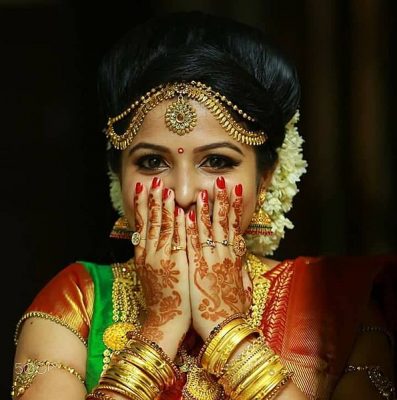
Ezhava Wedding Rituals
The wedding ceremony usually begins with the groom praying to Lord Ganesha. This is done to prevent any unforeseen obstacles or hindrances during the wedding. As Lord Ganesha is considered the remover of obstacles in Hindu mythology, this is an important part of the wedding customs.
The bride, on the other hand, offers prayers to Gauri, the Goddess of Power. Since she is taking on new responsibilities in her married life, the ritual asks the goddess to grant her strength and protection from evil.
Muhurtham: Once the prayers have been offered, the family astrologer then picks an auspicious date and time for the marriage. This is done by comparing the horoscopes of both the bride and the groom.
Historically, the Ezhava community conducted wedding ceremonies at their native villages or ancestral homes. As times have changed, more couples opt for convenience over tradition.
Hence, to be easily accessible for both families, a lot of modern Ezhava weddings are held at convention centers, wedding halls, etc.
The ‘Muhurtham’ literally means a specific auspicious time. According to tradition, a wedding has to take place at the exactly specified time. This will grant the couple prosperity and good fortune for their married life ahead.
Ezhava Wedding Ceremony
Thaalikettu: ‘Thaalikettu’ is another name for the ‘Mangalsutra’. It is a simple thread with black and gold beads with a large pendant hanging in the middle. Women wear the ‘mangalsutra’ to denote their marital status.
The bride’s father hands it to the groom, generally, on the day of the wedding. He then ties it around the bride’s neck symbolizing their togetherness.
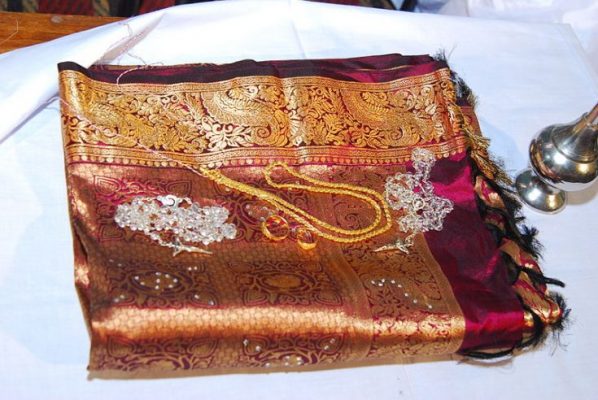
Kanyadanam: Kanyadanam is the tradition of ‘giving away the bride. The family members of the bride carry her to the ceremonial platform in a woven basket.
The groom will then tie the thaali around the bride’s neck. Then, the bride’s father will take her hand and place it into the groom’s right hand.
This is a symbol of handing over his daughter’s safety and responsibility into the hands of her husband. Usually, this is one of the most emotional moments in an Ezhava wedding.
After the ceremony, the bride’s parents wash the groom’s feet to show their acceptance of him as one of their own.
Saptapadi: This is the final sacred ritual during the Ezahava wedding ceremony. The bride and groom hold hands and walk around the holy fire. The couple will be holding hands together while they complete seven circles around the fire.
The holy fire represents the sanctifying divine force that binds the couple together in matrimony. It is also symbolic of the couple promising to stay together in the next life.
Post-Wedding Customs in Ezhava Wedding
The guests are then all requested to proceed together to the reception. During this time, the food will be served at the venue. The bride and groom are also present to take photographs with the guests and accept gifts and blessings from the people who wish to meet them.
The bride then travels to her new house with the groom and his family. This is usually a very emotional time for the bride. As she has to say goodbye to her parents and prepare to begin a new chapter in her life in a new home.
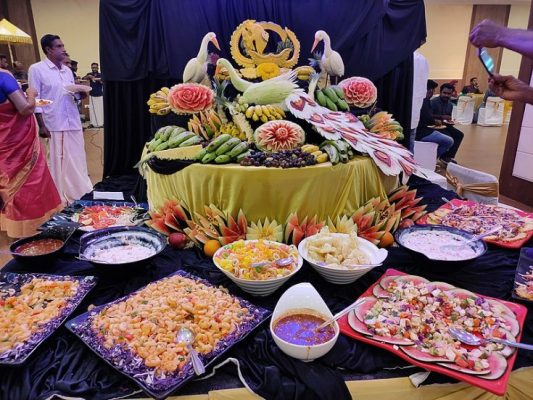
A glass of milk and a banana is given to the groom when he gets home. He then takes a bite and a sip and then shares it with his wife. This ritual is a way to strengthen the bond between the couple. It is also symbolic of their marriage being a shared responsibility between two individuals.






